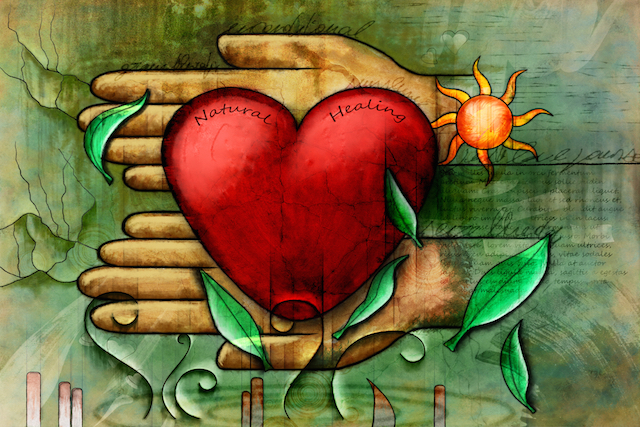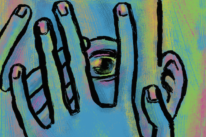
“Grief, no matter where it comes from, can only be resolved by connecting to other people.” ~Thomas Horn
We had just landed in Chicago. I had spent the last three hours on a flight from New Jersey sitting next to grown-ups who didn’t ask me fifty questions every two minutes, while my kids watched a movie with their dad, two rows behind.
I was looking forward to spending one whole week in Chicago, despite the freezing temps. This was my first real break in eight months, and boy, I had plans! Sleeping in, long baths, reading, and no laptop!
I switched my phone on as soon as we landed. There was a text from my sister in India that she’d sent a few hours ago. My mom had been in the hospital for two weeks now with a serious lung infection.
That morning her doctor had given us hope that she was getting better. This was good news, and I was relieved. I tried to call my mom and then my dad, but none of them answered.
I thought, I’ll try her again when we check in our hotel. I sent her a text, telling her the same along with a video of my two-and-a-half year old son running around the airport. These videos were her life.
We were in the back of a Black Sedan, on our way to the hotel, when my phone rang. It was my dad. He was crying. I couldn’t even understand what he was saying, but my heart was beating out of my chest.
The only thing I understood were these words, “She was put on a ventilator.”
I started crying, but I managed to say, “She will be fine, Papa. Don’t cry. Be strong!” I knew whatever “putting on a ventilator” meant, she would be fine! Goddammit, that was my mom! She was always fine. In reality, I had no idea what that meant.
The next few hours were a battle she fought alone for her life. She gave a good fight, but eventually, my sweet mama lost the battle. I didn’t just lose my mother. I also lost my best friend and my biggest cheerleader.
The next day, I carried myself and my heavy heart 8,000 miles away to India.
The last time I saw my mom was over two years ago. I didn’t get a chance to say goodbye. I will never be able to see her beautiful smile again. I will never hear her sweet voice.
The next few weeks are a blur. The only thing I remember is seeing her lifeless body.
I remember her slightly parted lips as if she was about to call my name. Her black hair with greys peeking out, and her soft, supple skin. I kissed on her forehead and wished somehow she would wake up.
I held her hand and said goodbye to the person who brought me into this world.
After spending a few weeks back in India with my family, I came back home to New Jersey. With nothing but grief and tears to fill my day with, I returned to work.
A big part of my work involves staying active on social media. I had taken a brief hiatus, but now I was ready to be back. But how could I talk about anything else other than that one thing that consumed my brain?
I had built a small yet strong community on my social media platform. Yet, I hesitated. What if someone posted a nasty comment? What if someone told me, “Enough already, stop depressing us!”
I spent most of my days at my home, crying. My husband was at work, and my kids were in school. I started noticing that other than a few friends who I could literally count on my fingers, others had disappeared from my life.
My phone never rang. My friends hardly texted me. When I ran into people, they were so awkward around me. Was it just my imagination?
Was it just a coincidence that my good friends had just vanished into thin air at that exact moment when I needed them the most?
It’s said that grief is like waves—sometimes it’s calm, and sometimes it’s like a tsunami. On days when it turned into tsunami, I felt like I was drowning and didn’t know if I would be able to come up for air. Ever.
Desperate for a human connection, I turned to my small but mighty crowd on social media.
On Instagram, I talked about my struggles and how I was coping with the loss of my mother. I wrote Facebook posts about my mom and how my kids were learning to calm me down when I broke into tears. In Facebook groups, I shared how my grief was affecting all areas of my life, including my work.
The response was phenomenal! People sent me flowers and handwritten cards. Some shared their experience of how they dealt with the loss of a loved one.
Some sent me long, beautiful personal messages and some just one sentence: “How can I help you?”
These were people I hardly knew, some I had never met. Yet together, they opened their hearts and gave me a platform to grieve.
Social media often gets a horrible rep, and I totally get it. There are some very nasty people out there. But for every one nasty person online, ten people are on social to be social.
They are looking for a human connection. Perhaps, when they see raw vulnerability, they extend their hand across their screens. When they read about someone who is going through the same pain as they are, they give their virtual shoulder to cry on.
Humans need emotional connection. Even more when we are grieving. And sometimes you can’t find it near you. Sometimes you aren’t comfortable talking about it to anyone you know. And sometimes, even if you have people around, you feel they just don’t get it.
Whatever it is, if you are struggling to talk to someone, know that social media can be a great resource. Use it; don’t shun it. Give it a try.
Join a Support Group
There are many great support groups online. A lot of closed Facebook groups dedicated to helping people who are grieving have stringent guidelines and zero tolerance policy. If you are new to social media or wary of sharing your personal stories online, start here.
Since all the members are going through the same pain, there is a very high level of support. I discovered people who had lost a loved one were the ones who could really understand what I was talking about. And sometimes, it’s so much easier to spill your emotions when no one is staring at you in the eye with uncomfortable silence.
Rule of 3:1
Give, give, give, and then make the ask. The rule of social media is the same as the rule of life. You give first, and then you ask.
Although I was received with an open heart from my community, I believe it was because I had built a relationship with them for six months. I had been there for them. I had provided value to their life or work many times before I made my ask.
Show Up as You Are
Don’t try to hide your emotions or pretend to be someone you aren’t. Tell your truth. Show up exactly the state you are in.
If you are new to social media or don’t use it for anything else other than remembering your friend’s birthday, then this will be hard. Start with a safe place first. Maybe it’s a closed online community of known people or five of your trusted online friends. You don’t need thousands, just a few people whom you build an emotional connection with.
We are very fortunate to live in a time when information and access are available to us at our fingertips. It’s up to us how we choose to use it.
My grief is nowhere close to being over. It shall never be. It has changed forms, and I believe it will continue to do so. But, knowing that I have a safe space where I can talk about it without being judged or ridiculed is helping me cope with my grief.
About Deepshikha Sairam
Deepshikha Sairam, founder of socialiquegroupe.com, helps solopreneurs build their tribe on Instagram. She believes in the importance of creating a community to strengthen customer loyalty and turn customers into fans. You can get her Free template of 40 Quotes that triggers emotional response and boosts engagement, here . To become a part of her community, follow her on Instagram.













 Though I run this site, it is not mine. It's ours. It's not about me. It's about us. Your stories and your wisdom are just as meaningful as mine.
Though I run this site, it is not mine. It's ours. It's not about me. It's about us. Your stories and your wisdom are just as meaningful as mine. 